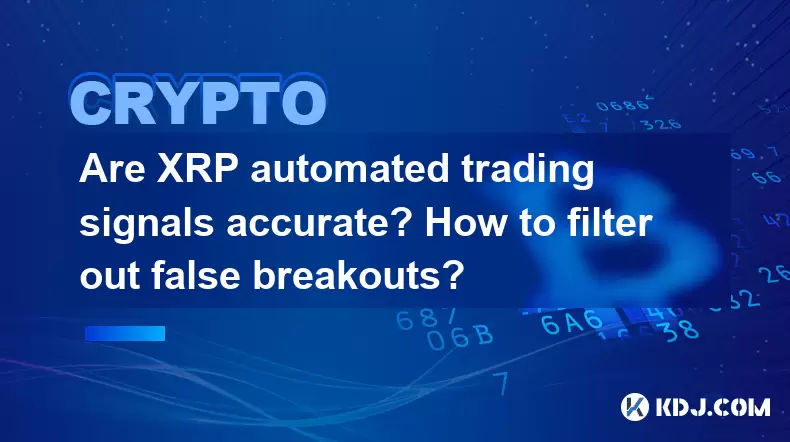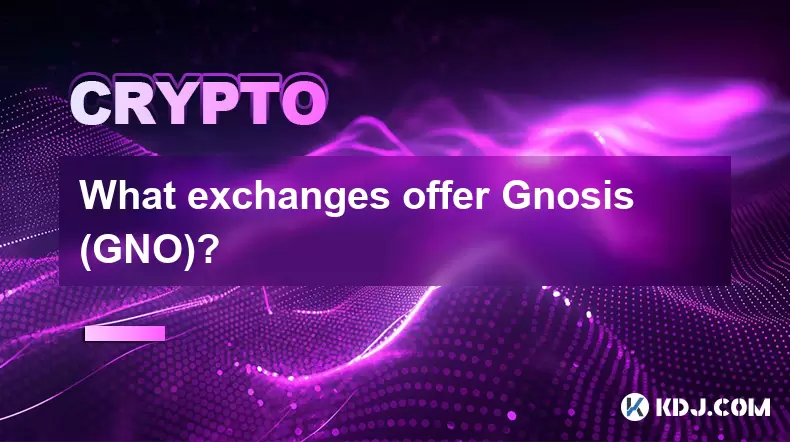-
 Bitcoin
Bitcoin $119000
-2.21% -
 Ethereum
Ethereum $4315
1.01% -
 XRP
XRP $3.151
-3.11% -
 Tether USDt
Tether USDt $0.0000
0.00% -
 BNB
BNB $808.5
-0.71% -
 Solana
Solana $175.8
-4.21% -
 USDC
USDC $0.9999
0.00% -
 Dogecoin
Dogecoin $0.2250
-3.92% -
 TRON
TRON $0.3469
1.77% -
 Cardano
Cardano $0.7818
-3.81% -
 Chainlink
Chainlink $21.47
-2.10% -
 Hyperliquid
Hyperliquid $43.30
-6.81% -
 Stellar
Stellar $0.4370
-2.84% -
 Sui
Sui $3.682
-4.40% -
 Bitcoin Cash
Bitcoin Cash $590.8
2.67% -
 Hedera
Hedera $0.2484
-5.20% -
 Ethena USDe
Ethena USDe $1.001
0.00% -
 Avalanche
Avalanche $23.10
-4.29% -
 Litecoin
Litecoin $119.2
-3.96% -
 Toncoin
Toncoin $3.409
0.90% -
 UNUS SED LEO
UNUS SED LEO $9.016
-1.29% -
 Shiba Inu
Shiba Inu $0.00001304
-3.82% -
 Uniswap
Uniswap $11.18
1.33% -
 Polkadot
Polkadot $3.913
-3.51% -
 Cronos
Cronos $0.1672
-3.08% -
 Dai
Dai $1.000
0.02% -
 Ethena
Ethena $0.7899
-4.70% -
 Bitget Token
Bitget Token $4.400
-1.23% -
 Pepe
Pepe $0.00001132
-5.93% -
 Monero
Monero $257.9
-6.44%
Are XRP automated trading signals accurate? How to filter out false breakouts?
Automated trading signals for XRP can be useful but vary in accuracy; traders should use volume analysis, multiple time frames, and technical indicators to filter out false breakouts.
May 20, 2025 at 12:28 am

Are XRP automated trading signals accurate? How to filter out false breakouts?
Automated trading signals for cryptocurrencies like XRP have become increasingly popular among traders looking to capitalize on the volatile nature of the market. These signals are generated by algorithms that analyze market data to predict price movements. However, the accuracy of these signals can vary significantly, and traders often struggle with the challenge of filtering out false breakouts. In this article, we will delve into the accuracy of XRP automated trading signals and provide detailed strategies for identifying and filtering out false breakouts.
Understanding XRP Automated Trading Signals
Automated trading signals are generated by sophisticated algorithms that analyze vast amounts of market data, including price, volume, and other technical indicators. These algorithms aim to identify patterns that could indicate future price movements. For XRP, these signals can be particularly useful given the cryptocurrency's high volatility and frequent price swings.
The accuracy of these signals depends on several factors, including the quality of the algorithm, the data it uses, and the market conditions at the time. Some signals are more reliable than others, and it is crucial for traders to understand the underlying methodology and historical performance of the signal provider.
Factors Affecting the Accuracy of XRP Trading Signals
Several key factors influence the accuracy of XRP automated trading signals:
Algorithm Quality: The sophistication and effectiveness of the algorithm play a significant role in the accuracy of the signals. Advanced algorithms that incorporate machine learning and artificial intelligence tend to perform better than simpler models.
Data Quality: The accuracy of the signals is also dependent on the quality and timeliness of the data used. High-quality, real-time data can lead to more accurate predictions.
Market Conditions: The volatility and liquidity of the XRP market can significantly impact the reliability of trading signals. During periods of high volatility, signals may be less accurate due to increased market noise.
Historical Performance: Evaluating the historical performance of a signal provider can give traders an idea of how accurate their signals have been in the past. However, past performance is not always indicative of future results.
Identifying False Breakouts in XRP Trading
False breakouts occur when the price of XRP moves beyond a key level of support or resistance but then quickly reverses direction. These can be particularly frustrating for traders who enter positions based on these breakouts, only to see the price move against them.
To effectively filter out false breakouts, traders need to employ a combination of technical analysis tools and strategies. Here are some methods to help identify and avoid false breakouts:
Using Volume Analysis
Volume is a critical indicator when it comes to confirming breakouts. A genuine breakout is typically accompanied by high trading volume, as more traders participate in the move. Conversely, a false breakout often occurs on low volume, indicating a lack of market consensus.
Check the volume: When a breakout occurs, immediately check the trading volume. If the volume is significantly lower than average, it may be a false breakout.
Compare volume with previous breakouts: Look at the volume during previous breakouts to establish a baseline. A breakout with lower volume than previous ones is more likely to be false.
Employing Multiple Time Frames
Analyzing XRP price movements across different time frames can provide a more comprehensive view of market trends and help filter out false breakouts. A breakout that appears valid on a shorter time frame may be less convincing when viewed on a longer time frame.
Analyze shorter time frames: Look for breakouts on 15-minute or 1-hour charts. If a breakout occurs, check if it is confirmed on longer time frames.
Confirm on longer time frames: Use daily or weekly charts to confirm the validity of the breakout. If the breakout is not visible on these longer time frames, it may be a false signal.
Utilizing Technical Indicators
Technical indicators can provide additional confirmation or warning signals for potential false breakouts. Some commonly used indicators include the Relative Strength Index (RSI), Moving Average Convergence Divergence (MACD), and Bollinger Bands.
RSI Divergence: Look for divergences between the price and the RSI. If the price breaks out but the RSI does not follow, it may indicate a false breakout.
MACD Confirmation: Use the MACD to confirm the strength of the breakout. A breakout without a corresponding MACD signal may be less reliable.
Bollinger Bands: Monitor the price action relative to Bollinger Bands. A breakout that quickly reverses and closes back within the bands may be a false signal.
Implementing Price Action Analysis
Price action analysis involves studying the movement of XRP prices without relying on indicators. This approach can help traders identify genuine breakouts and filter out false ones.
Look for strong candlestick patterns: A breakout accompanied by strong bullish or bearish candlestick patterns is more likely to be genuine.
Watch for rejection: If the price breaks out but quickly gets rejected back below the breakout level, it may be a false breakout.
Monitor the price behavior at key levels: Pay close attention to how the price behaves around key support and resistance levels. A false breakout often occurs when the price fails to sustain above or below these levels.
Practical Steps to Filter Out False Breakouts
To effectively filter out false breakouts in XRP trading, traders can follow these practical steps:
Monitor volume: Always check the volume during a breakout. High volume confirms the breakout, while low volume suggests it may be false.
Use multiple time frames: Confirm breakouts on both shorter and longer time frames to ensure they are valid across different market perspectives.
Apply technical indicators: Use indicators like RSI, MACD, and Bollinger Bands to confirm or refute the breakout signal.
Analyze price action: Study the price action around key levels and look for strong candlestick patterns to validate the breakout.
Set appropriate stop-losses: Use stop-loss orders to limit potential losses from false breakouts. Place them just below or above the breakout level to minimize risk.
Backtest strategies: Before applying these strategies in live trading, backtest them using historical data to see how well they perform in identifying false breakouts.
Frequently Asked Questions
Q: Can automated trading signals be used for other cryptocurrencies besides XRP?
A: Yes, automated trading signals can be used for other cryptocurrencies. The principles and strategies discussed for XRP can be applied to other digital assets, although the specific performance may vary depending on the cryptocurrency's market dynamics.
Q: How often should I check the accuracy of my trading signals?
A: It is advisable to regularly monitor the accuracy of your trading signals, ideally on a weekly or monthly basis. This helps you stay informed about their performance and make necessary adjustments to your trading strategy.
Q: Are there any tools or platforms that can help with filtering out false breakouts?
A: Yes, several trading platforms and tools offer features that can help with filtering out false breakouts. For example, platforms like TradingView and MetaTrader 4 provide customizable indicators and charting tools that can be used to implement the strategies discussed in this article.
Q: Can false breakouts be completely eliminated from trading?
A: While it is impossible to completely eliminate false breakouts, traders can significantly reduce their impact by using the strategies and tools mentioned in this article. Continuous learning and adaptation to market conditions are key to managing false breakouts effectively.
Disclaimer:info@kdj.com
The information provided is not trading advice. kdj.com does not assume any responsibility for any investments made based on the information provided in this article. Cryptocurrencies are highly volatile and it is highly recommended that you invest with caution after thorough research!
If you believe that the content used on this website infringes your copyright, please contact us immediately (info@kdj.com) and we will delete it promptly.
- Arc Blockchain: Circle's Layer-1 Play Amidst $428 Million Loss
- 2025-08-12 20:30:13
- XRP Price: Riding the Bull Cycle Wave or Hitting a Wall?
- 2025-08-12 20:50:12
- Cloud Mining in 2025: Chasing Passive Income and High Returns
- 2025-08-12 20:30:13
- Solana Price, Meme Coins, and 100x Gains: What's the Hype?
- 2025-08-12 20:50:12
- Japan, Bitcoin, and Treasuries: A New Era of Corporate Finance?
- 2025-08-12 18:30:12
- Bitcoin Bull Market: Decoding the Indicators for the Next Big Move
- 2025-08-12 18:30:12
Related knowledge

How to purchase Aragon (ANT)?
Aug 09,2025 at 11:56pm
Understanding Aragon (ANT) and Its PurposeAragon (ANT) is a decentralized governance token that powers the Aragon Network, a platform built on the Eth...

Where to trade Band Protocol (BAND)?
Aug 10,2025 at 11:36pm
Understanding the Role of Private Keys in Cryptocurrency WalletsIn the world of cryptocurrency, a private key is one of the most critical components o...

What is the most secure way to buy Ocean Protocol (OCEAN)?
Aug 10,2025 at 01:01pm
Understanding Ocean Protocol (OCEAN) and Its EcosystemOcean Protocol (OCEAN) is a decentralized data exchange platform built on blockchain technology,...

How to invest in Kyber Network Crystal v2 (KNC)?
Aug 12,2025 at 05:21pm
Understanding Kyber Network Crystal v2 (KNC)Kyber Network is a decentralized liquidity hub built on the Ethereum blockchain that enables instant token...

Where can I buy UMA (UMA)?
Aug 07,2025 at 06:42pm
Understanding UMA and Its Role in Decentralized FinanceUMA (Universal Market Access) is an Ethereum-based decentralized finance (DeFi) protocol design...

What exchanges offer Gnosis (GNO)?
Aug 12,2025 at 12:42pm
Overview of Gnosis (GNO) and Its Role in the Crypto EcosystemGnosis (GNO) is a decentralized prediction market platform built on the Ethereum blockcha...

How to purchase Aragon (ANT)?
Aug 09,2025 at 11:56pm
Understanding Aragon (ANT) and Its PurposeAragon (ANT) is a decentralized governance token that powers the Aragon Network, a platform built on the Eth...

Where to trade Band Protocol (BAND)?
Aug 10,2025 at 11:36pm
Understanding the Role of Private Keys in Cryptocurrency WalletsIn the world of cryptocurrency, a private key is one of the most critical components o...

What is the most secure way to buy Ocean Protocol (OCEAN)?
Aug 10,2025 at 01:01pm
Understanding Ocean Protocol (OCEAN) and Its EcosystemOcean Protocol (OCEAN) is a decentralized data exchange platform built on blockchain technology,...

How to invest in Kyber Network Crystal v2 (KNC)?
Aug 12,2025 at 05:21pm
Understanding Kyber Network Crystal v2 (KNC)Kyber Network is a decentralized liquidity hub built on the Ethereum blockchain that enables instant token...

Where can I buy UMA (UMA)?
Aug 07,2025 at 06:42pm
Understanding UMA and Its Role in Decentralized FinanceUMA (Universal Market Access) is an Ethereum-based decentralized finance (DeFi) protocol design...

What exchanges offer Gnosis (GNO)?
Aug 12,2025 at 12:42pm
Overview of Gnosis (GNO) and Its Role in the Crypto EcosystemGnosis (GNO) is a decentralized prediction market platform built on the Ethereum blockcha...
See all articles

























































































